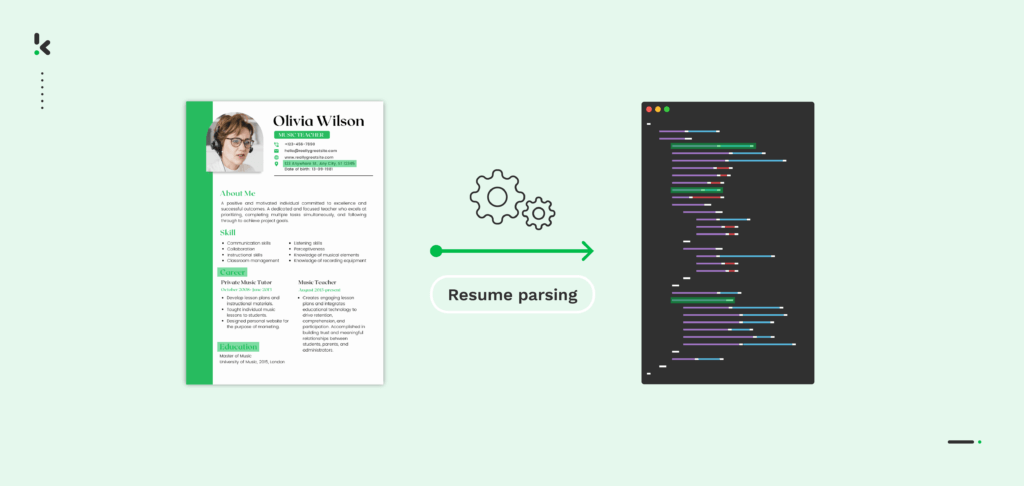

Picture this. It’s hiring season, and the flood of applications begins—hundreds, maybe even thousands pouring in. Each resume holds the potential for a new member to join your team, but here’s the catch: every single one is unique, with its own formatting quirks, style, and crucial details hidden within pages of text.
Your task? Sorting through this overload of possibilities, entering all data needed from the resume manually, and doing it all quickly, without missing a single talented candidate. It’s a daunting challenge, overwhelming and nearly impossible to tackle efficiently, until now.
Enter resume parsing, the modern way of processing documents in recruitment. This technology is like having an ally, empowering you to process, analyze data, and organize those endless resumes in the blink of an eye. But what is it, exactly? And how does it work? Let’s dive into that in this blog!
What is Resume Parsing?
Resume parsing or CV parsing is the automated process of extracting relevant information from resumes, making it easier to review job applications. It enables faster decision-making and lowers waiting times, benefiting applicants and HR professionals.
Resume parsing software leverages such advanced technologies as AI, machine learning, and NLP. From fetching resumes submitted via email or other file applications to integrating extracted data into your preferred software – it streamlines the entire recruitment workflow. This way, your only task is to select the right candidate.
But before we go any further, let’s consider the pros and cons of resume parsing to help you decide if it’s the right move for you.
Pros of Resume Parsing
As we’ve already mentioned, resume parsing is a game changer for HR departments and recruitment agencies. Here are the most important pros that resume parsing can bring to your organization.
- Reduce Errors: Minimize human errors and ensure candidate qualification based on the right information by automating data extraction.
- Improve Efficiency: Speed up your resume reviewing process to focus on engaging with top talent while promptly notifying unsuitable candidates.
- Embrace Scalability: Easily manage large volumes of applications, scaling your recruitment efforts according to your company’s needs.
- Ensure Best Candidate Experience: Use keywords to pre-select candidates ensuring quick response to job applications, thus improving the overall candidate experience.
- Enhance Transparency in Candidate Selection: Automate document redaction to remove details like names, gender, and location, ensuring fair candidate pre-selection.
Cons of Resume Parsing
While resume parsing presents a wide range of advantages, it’s essential to keep these potential drawbacks in mind:
- Loss of individuality: Candidates who submit creative resumes risk being overlooked, as their creativity may only be parsed as information in your database.
- Inaccuracy: Depending on software quality, resume parsing may struggle with complex or unconventional resume formats, potentially leading to misinterpretation of data or missing important information.
- Integration Challenges: Ensuring seamless integration with existing HR systems can sometimes be complex.
When it comes to resume parsing, the pros can easily outweigh the cons. The trick? Choosing the right software to maximize benefits and tackle any drawbacks head-on.
What to Prioritize When Selecting a Resume Parsing Tool?
When scouting for a resume parser, businesses should prioritize a few criteria to ensure efficiency in the hiring process.
- Accuracy: High precision in data extraction ensures reliable candidate profiles, with a target accuracy rate of at least 90%.
- Integration Capabilities: Seamless integration with existing recruitment and HR software systems.
- Customization: Option to tailor parsing criteria to your specific needs, including custom data fields and document redaction.
- Support: Robust customer support to promptly address any issues encountered.
- Bulk Upload: The possibility to upload multiple resumes simultaneously for efficient processing.
- Global Coverage: Support of different languages to facilitate international hiring efforts.
- Data Privacy Compliance: GDPR compliance is prioritized to ensure the protection of employee data within the HR department.
- Wide Format Support: Ability to parse documents in different formats such as PDFs, email attachments, or Google Drive files.
Now that you’re familiar with resume parsing and what to look at when choosing the right software, meet Klippa DocHorizon. It’s your go-to for streamlining the application process with top-notch resume parsing technology.
How to Do Resume Parsing with Klippa
Klippa DocHorizon revolutionizes recruitment by offering features that you can customize according to your needs:
- Information extraction from resume with ocr
- Output sent in the format of choice such as CSV, XLSX, XML, and more
- Classification of resumes according to your standard
- Redaction of private information on resume
- Easy implementation into your HRM system
- Integration via OCR SDK, API, or our IDP Platform
Here is a detailed step-by-step of how resume parsing is done with Klippa.
Step 1: Sign Up to the platform
The first step is to sign up to our platform. It’s really simple, you only have to click on this link, fill in your details and create an account.
Step 2: Upload Resume
To provide resumes, you have 2 different options:
- Upload resumes to Klippa’s platform, either individually or in bulk. This can be done via mobile apps, FTP, email, or web applications.
- Set up a workflow to automatically fetch resumes from selected email addresses or Google Drive to the platform.
In this example, we have selected option 2 by choosing an input source and automating the process of retrieving a resume from an email address.
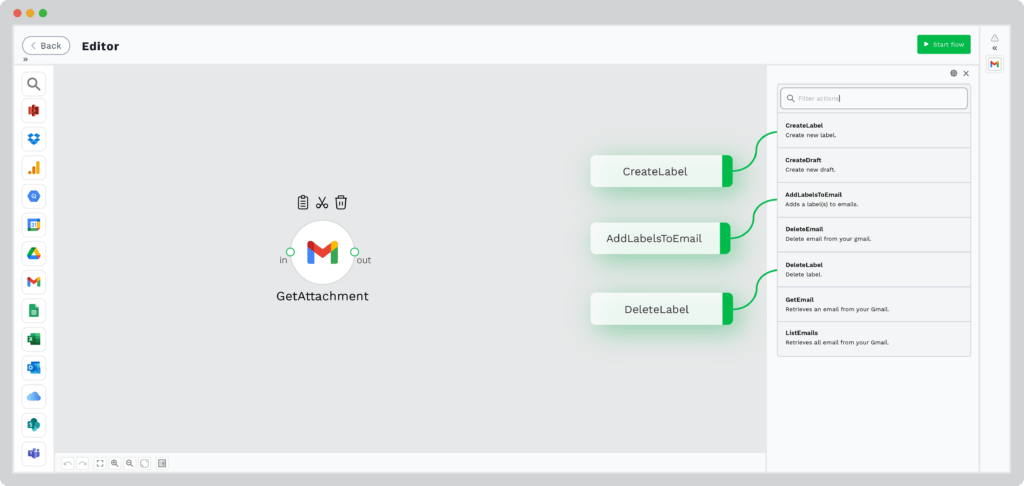

Step 3: Resume Data Extraction
Klippa’s technology is designed to automatically extract relevant fields from resumes. All you have to do is select the desired fields that you need from the resume, and Klippa extracts them for you. If there are any different fields than the standard ones that you need to extract, you can use the prompt builder to choose the specific field.
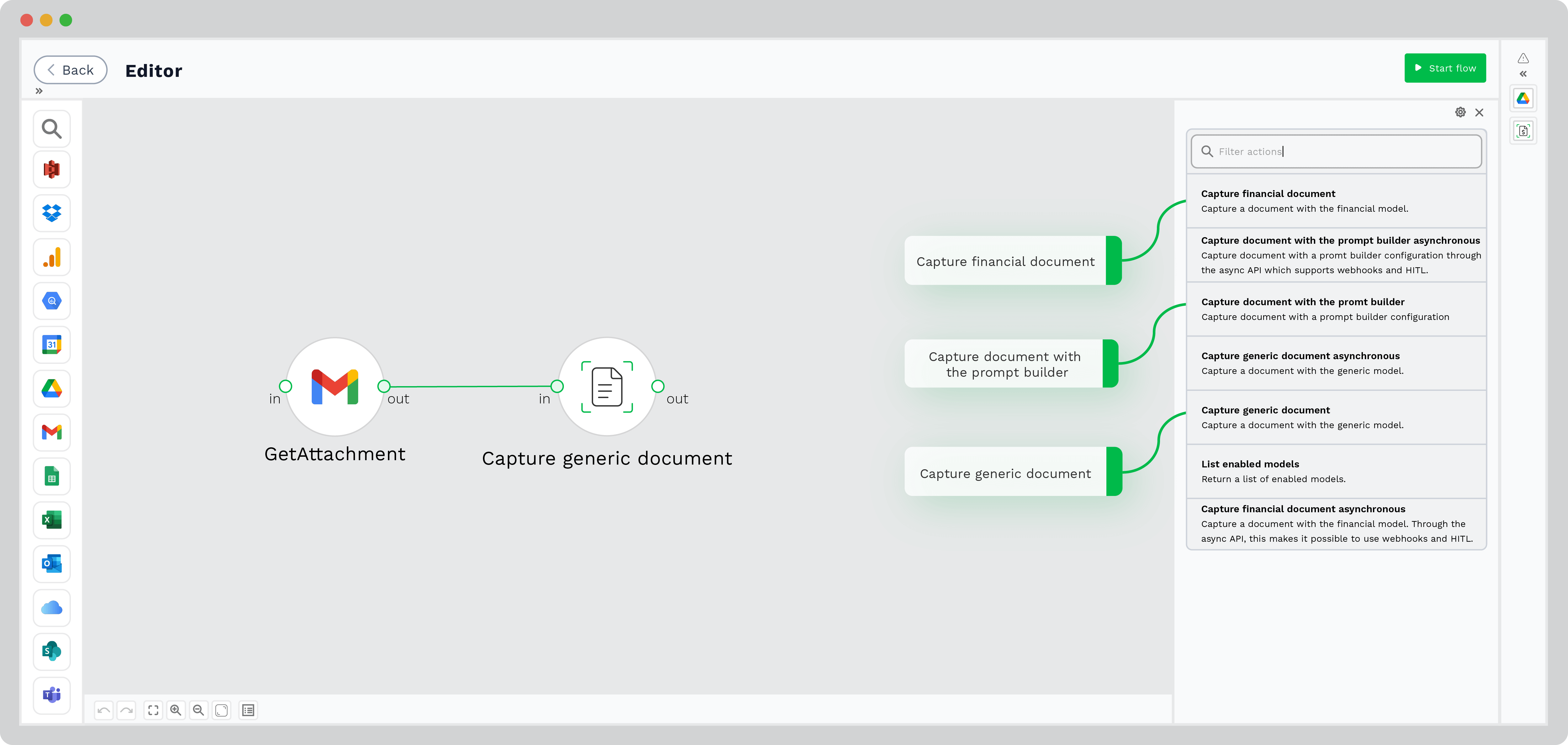

Step 4: Resume Parsing
Once all the necessary data has been collected and extracted from the resume, the next step is to convert it into the format of your choice. Our platform automates this conversion process, making it ready for use. By default, the data is converted to a JSON file. However, you can choose other formats such as XLSX, CSV, and more.
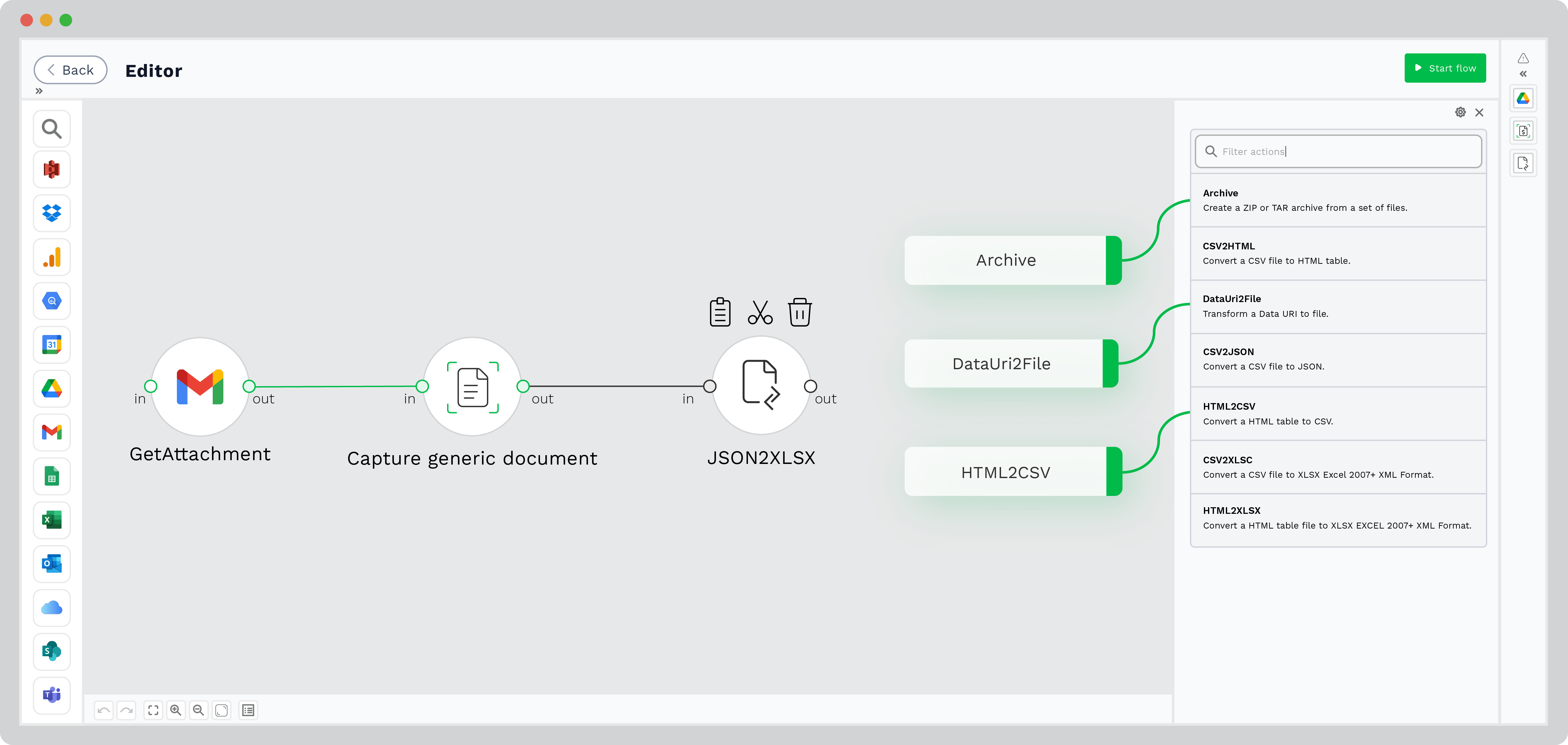

Step 5: Output to your HR system
The extracted data can be seamlessly sent into the company’s ATS or HR software, or any preferred destination to further optimize the recruitment process in the format you chose via API.
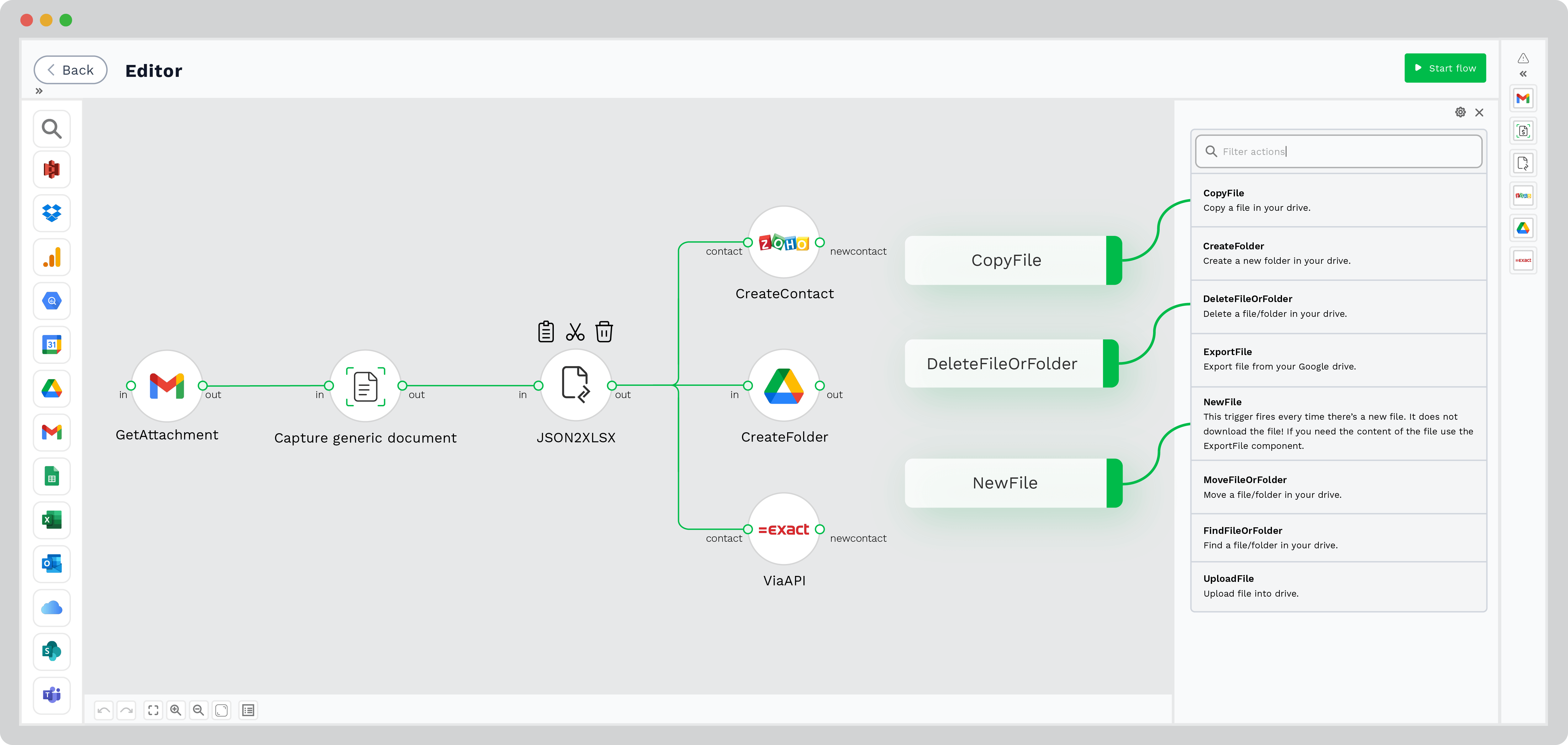

With Klippa DocHorizon, the hiring process becomes a breeze for recruiters and applicants.
Conclusion
Resume parsing with Klippa DocHorizon not only boosts the efficiency and fairness of the recruitment process but also ensures that businesses stay ahead in the competitive talent acquisition game. By harnessing Klippa’s resume parsing technology, companies can transform their recruitment strategy, ensuring they attract and retain the best talent for their teams.
Ready to take your recruitment process to the next level? Please contact us, or book a demo below!